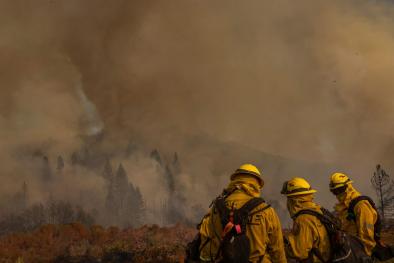Increasing heat-stress inequality in a warming climate
Study key findings & significance
- The study provides evidence of historical heat-stress inequality across the globe.
- Heatwave exposure has disproportionately increased in the lowest-income regions globally compared to the highest-income regions over the past four decades.
- Lagged adaptation in the lower-income region translates to escalating heatwave exposure and increased heat-stress inequality.
- The lowest-income quarter of the population will see almost as much exposure to heatwaves as the rest of the population combined over 2090-99.
- The frequency of mean annual heatwave days across continents increased between 4.8-6.8 days during 1980-2019, which co-occurred with a 2-3 week expansion of the mean annual heatwave season length in the 2010s as compared to that of the 1980s.
- Emerging heat hazards (e.g., shock heatwaves – the first heatwave of the season – and widespread contiguous extreme heat events) intensified in the past four decades and are expected to increase in the future across the globe, jeopardizing adaptation efforts even in wealthy countries.
- The findings complement literature that shows developing nations experience a higher impact from climate change than the developed world.
Abstract
Adaptation is key to minimizing heatwaves’ societal burden; however, our understanding of adaptation capacity across the socioeconomic spectrum is incomplete. We demonstrate that observed heatwave trends in the past four decades were most pronounced in the lowest-quartile income region of the world resulting in >40% higher exposure from 2010-2019 compared to the highest-quartile income region. Lower-income regions have reduced adaptative capacity to warming, which compounds the impacts of higher heatwave exposure. We also show that individual contiguous heatwaves engulfed up to 2.5-fold larger areas in the recent decade as compared to the 1980s. Widespread heatwaves can overwhelm the power grid and nullify the electricity dependent adaptation efforts, with significant implications even in regions with higher adaption capacity. Furthermore, we compare projected global heatwave exposure using per-capita gross domestic product as an indicator of adaptation capacity. Hypothesized rapid adaptation in high-income regions yields limited changes in heatwave exposure through the 21st century. By contrast, lagged adaptation in the lower-income region translates to escalating heatwave exposure and increased heat-stress inequality. The lowest-quartile income region is expected to experience 1.8- to 5-fold higher heatwave exposure than each higher income region from 2060-2069. This inequality escalates by the end of the century, with the lowest-quartile income region experiencing almost as much heatwave exposure as the three higher income regions combined from 2090-2099. Our results highlight the need for global investments in adaptation capabilities of low-income countries to avoid major climate-driven human disasters in the 21st century.
Related Content



